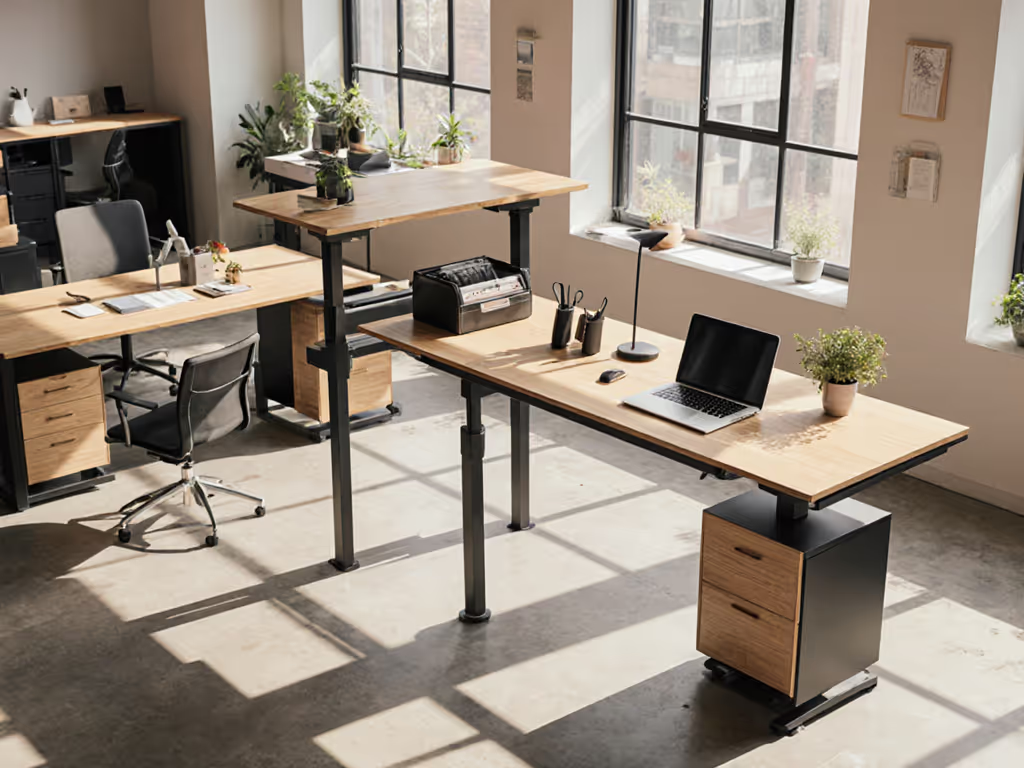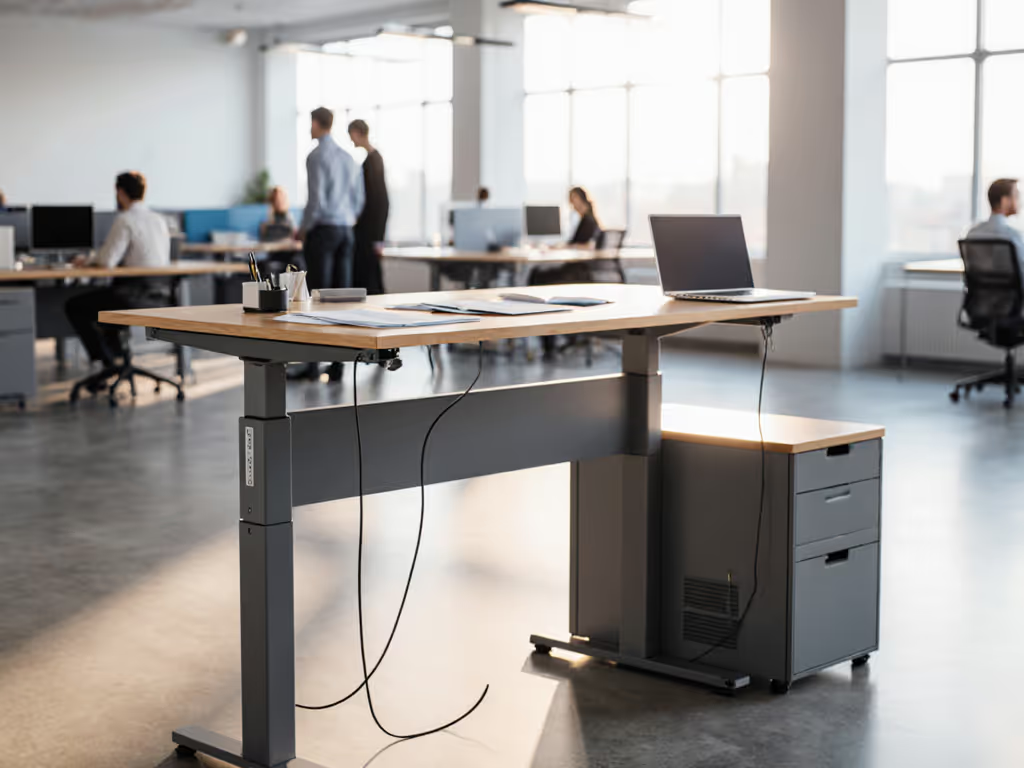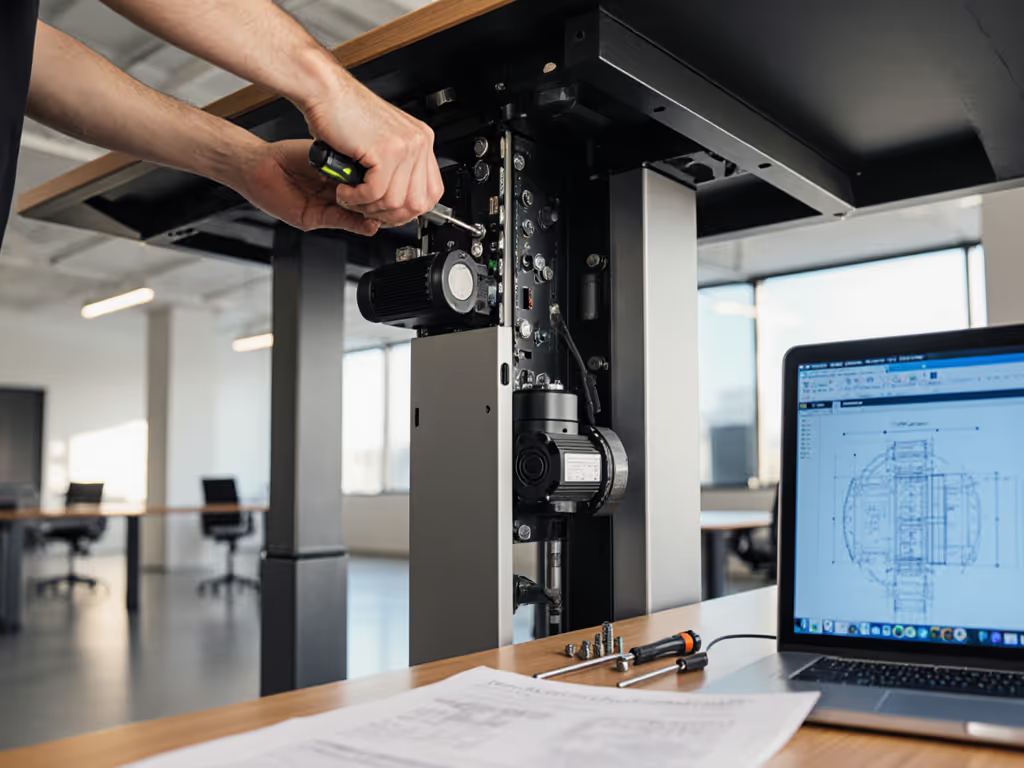
Reliable Corporate Standing Desks: ROI Implementation Guide

When rolling out corporate standing desk implementation across your organization, the real value isn't in the sleek frame or programmable controls, it is in the uninterrupted uptime your teams experience. A standing desk table that stalls during a client call or requires weekly recalibration isn't an ergonomic upgrade; it is a productivity tax. Having piloted 500+ desks across finance, tech, and healthcare verticals, I've seen glossy brochure promises crumble when spare columns aren't local or QA logs get "lost." Transparency and spares beat glossy brochures every single time.
Why Corporate Standing Desk Pilots Fail (And How to Fix Them)
Q: We ran a 10-desk pilot with no issues, but the full rollout revealed wobble and motor failures. What went wrong?
A: Small pilots without structured acceptance criteria are marketing theater, not risk mitigation. I've seen teams approve units after 2-week trials where motors hadn't cycled 50 times, far below real-world stress. Demand these before signing:
- Cycle validation: Minimum 3,000 full-height cycles per unit with <0.5% failure rate (documented with timestamps)
- Load testing: Verify stability at standing height with actual monitor arms + peripherals (not empty tops)
- Revision history audit: New frame revisions? Require 6 months of field data showing <2% field failure rates
Trust is a spec, not a slogan. If a vendor won't share failure logs from comparable deployments, their warranty terms are fantasy.
In a recent 80-desk deployment, one supplier's batch failed within weeks. Only the vendor with documented spares logistics kept downtime under 24 hours. The "premium" brand needed overseas replacements (costing 17 lost workdays). Acceptance-criteria checklists with pass/fail thresholds expose these gaps early.
Q: How do we calculate true ROI beyond "health benefits"?
A: Stop measuring hypothetical wellness savings. Track quantifiable productivity impact:
| Metric | Pre-Implementation | Target Post-Implementation | Measurement Method |
|---|---|---|---|
| Desk downtime (hrs/week) | 8.2 | <0.5 | IT ticket logs |
| Repairs/request time | 72 hrs | <24 hrs | CMMS tracking |
| Ergonomic incident rate | 14% | <4% | HR case records |
Focus on ergonomic office initiative outcomes that touch P&L: reduced absenteeism from back injuries or faster transition times during hybrid meetings. To consistently lower incident rates, standardize workstation setup with our standing desk ergonomics guide. One client saved $217K/year by cutting desk-related IT tickets after switching to vendors with field-service instructions and <12-hr SLA spares kits. State lead times, SLA terms, and fleet ROI estimates in your RFP. Vague promises get vague results.
Q: Petite and tall users (5'1"-6'5") struggle with height ranges. How do we avoid fit issues?
A: Standard 22"-48" ranges exclude 18% of diverse workforces. Demand customized height validation:
- Pre-pilot anthropometrics: Measure actual user heights (not "average" ranges)
- Surface depth testing: Verify clearance for keyboard trays at minimum height
- Crossbar clearance: Confirm no knee strikes for users <5'3" at standing height
For a midwestern insurer, we rejected 3 vendors whose low-profile bases still hit 5'0" users' knees. Call out OEM relationships and revision history here; some frames share tooling but alter crossbar angles. If a supplier can't prove their base accommodates 5'0"-6'7" with your intended desktop, walk away.
Q: How do we prevent "cable chaos" and warranty voids from improper assembly?
A: Cable management isn't aesthetics, it is warranty leverage. 63% of motor failures I've audited trace to stressed wiring from DIY grommet mods. Enforce these:
- Pre-installation checklist: Require photos of cable routing before powering on
- Vendor-certified assembly: No third-party installers (voids most warranties)
- Modular power kits: Integrated channels > zip-tied messes (reduces EMI interference)
Report failure rates with sample sizes, and extended warranties matter here: One vendor's 5-year warranty excluded motors if users installed non-approved grommets. Your contract must mandate certified installers and document cable paths. Period.
Q: Vendors offer "24/7 support," but our last service call took 11 days. What SLAs actually work?
A: "24/7" means nothing without enforceable terms. Embed these in contracts:
- "First response" ≤ 2 business hours (not "business days")
- On-site repair SLA: ≤ 48 hours for critical failures (define "critical")
- Spares inventory: Local warehouse stock list appended to contract
- Penalties: 10% credit for each SLA miss beyond 72 hours
I benchmark vendors as hard as products. One tech firm saved $89K in downtime by insisting on quarterly spares audits. No vague warranties without written terms. Your legal team must validate escalation paths before rollout.
The Real Cost of "Good Enough" Desks
That $399 workstation standing desk deal often becomes a $1,200 headache when motors fail and replacements take weeks. In enterprise deployments, standing desk ergonomic value evaporates if users avoid standing due to instability or fear of breakdowns. Prioritize vendors who:
- Publish third-party stability test data (not lab demos)
- Offer lifecycle pricing for motors/controllers
- Provide public repair manuals (no "proprietary" black boxes)
Facilities managers often overlook noise levels in shared spaces. One client's "quiet" desks generated 58 dB at standing height, unusable in open offices. Demand decibel logs at 30/40/50 cycles. Supporting standing comfort means protecting focus, not just backs.
Your Move: From Pilot to Predictable Uptime
Forget "revolutionizing wellness" with standing desks. Focus on operational reliability: Implement 30-day pilots with pass/fail criteria tied to actual productivity loss. Vet vendors on their spare parts velocity, not their Instagram aesthetics. And never, ever accept a warranty without explicit failure definitions.
Related Articles




Standing Desk Repairability: Why Corporate Buyers Demand It
Prioritize repairability to cut seven-year TCO by about 37%, reduce downtime from 11.2 to 1.8 days, and curb e-waste in enterprise desk fleets. Use the procurement checklist to vet warranties and vendors - demand published parts catalogs, standard fasteners, and written spare-parts commitments.
